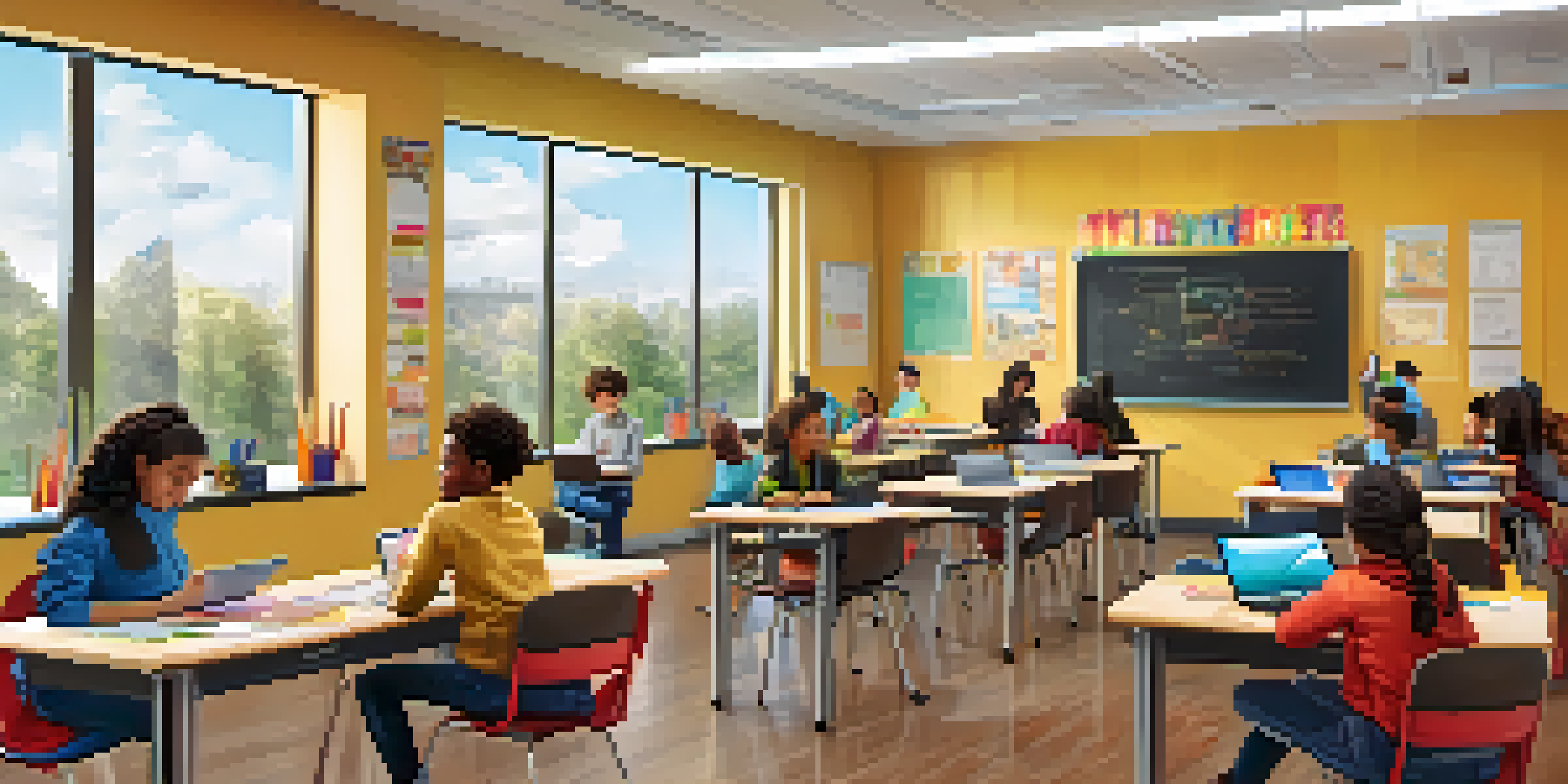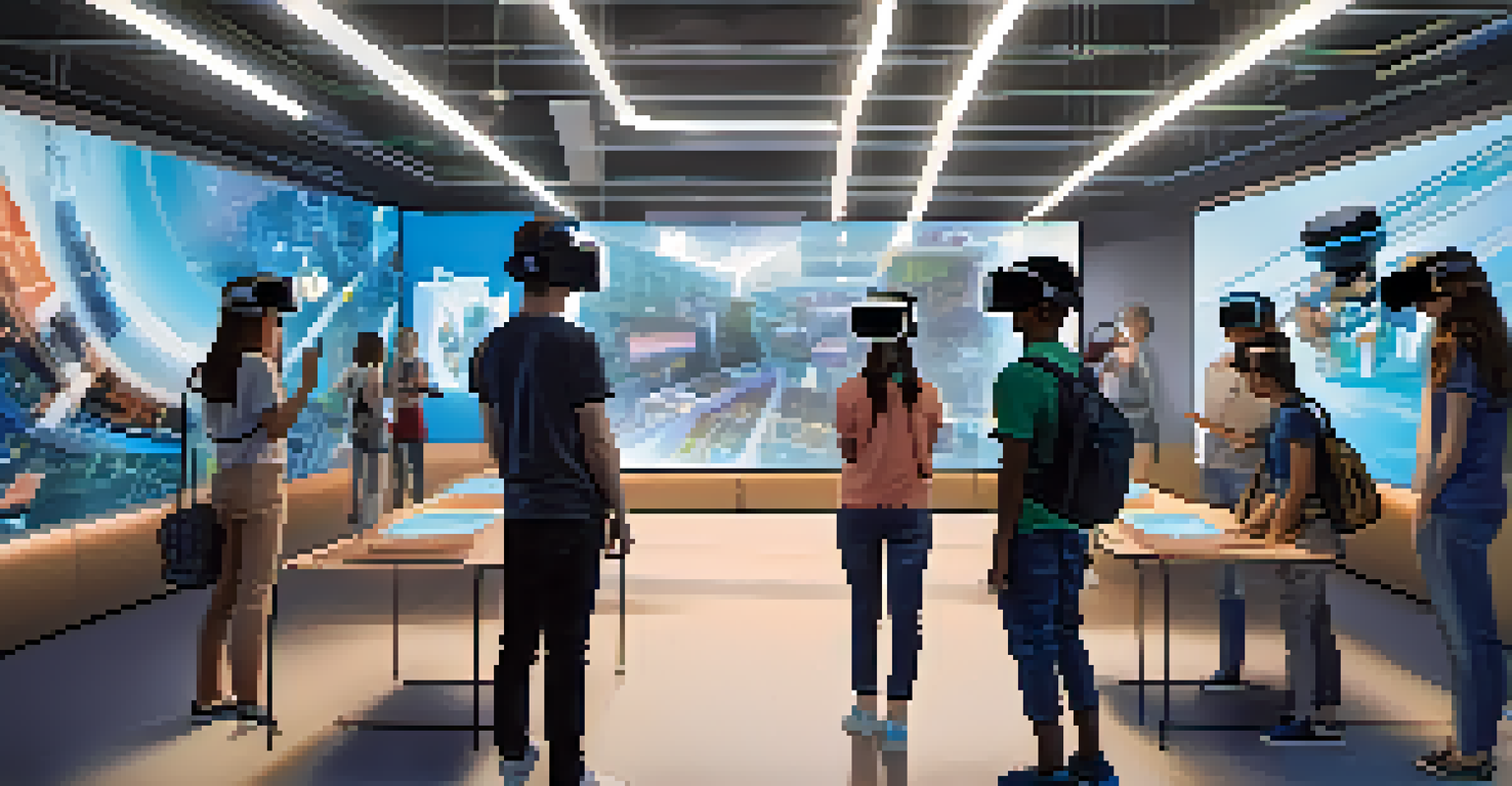Technology Integration in Physical Learning Spaces

Understanding Technology Integration in Education
Technology integration in education refers to the effective use of technology to enhance teaching and learning. It involves embedding various tech tools into the curriculum to create a more engaging learning experience. This approach transforms traditional classrooms into dynamic environments where learners can thrive.
Technology is best when it brings people together.
When we think of technology in education, we often picture laptops and tablets. However, it encompasses a wide range of tools, from interactive whiteboards to virtual reality. Each of these technologies can cater to different learning styles, making education more inclusive.
Ultimately, the goal is to create a seamless blend of technology and pedagogy. This means that technology should not just be an add-on but a core component of the learning experience that supports educational goals.
Benefits of Technology in Physical Learning Spaces
Integrating technology into physical learning spaces offers numerous benefits. One of the most significant advantages is increased engagement; students are often more motivated to participate when technology is involved. Interactive tools can make lessons more captivating and relevant to today's digital natives.

Moreover, technology facilitates personalized learning. With digital resources, educators can tailor lessons to meet the diverse needs of their students. For instance, adaptive learning software can adjust the difficulty of tasks based on individual performance, ensuring that all learners can progress at their own pace.
Technology Enhances Learning Engagement
Integrating technology into education increases student motivation and makes lessons more captivating.
Finally, technology fosters collaboration among students. Tools like shared documents and online discussion boards allow students to work together, regardless of their physical location. This collaborative spirit promotes teamwork and communication skills, which are vital in today's workforce.
Common Technologies Used in Learning Spaces
There are several technologies that have become staples in modern classrooms. Interactive whiteboards, for instance, allow teachers to present lessons dynamically and engage students in real-time. These boards can display multimedia content, making lessons more interactive and visually stimulating.
The future belongs to those who believe in the beauty of their dreams.
Another popular tool is the use of tablets and laptops. These devices give students access to a wealth of information and resources at their fingertips. They can research topics, complete assignments, and collaborate with classmates, all while fostering digital literacy skills.
Additionally, learning management systems (LMS) are crucial for organizing educational content and tracking student progress. LMS platforms enable teachers to create, distribute, and assess assignments efficiently, streamlining the learning process for both educators and students.
Challenges of Integrating Technology in Education
While the benefits of technology in learning spaces are significant, challenges exist as well. One major hurdle is the digital divide; not all students have equal access to technology at home. This inequality can hinder the learning experience for some students, making it essential for schools to address these disparities.
Another challenge is the potential for distraction. With the vast array of online content available, students may find it difficult to stay focused on their lessons. Educators must find ways to guide students in using technology responsibly and effectively.
Challenges in Tech Integration
The digital divide, potential distractions, and the need for ongoing teacher training pose significant challenges to effective technology integration in classrooms.
Lastly, teacher training is crucial for successful technology integration. Many educators may feel overwhelmed by new tools and platforms, which can lead to ineffective usage. Providing ongoing professional development ensures that teachers are equipped to make the most of technology in their classrooms.
Creating a Technology-Enhanced Learning Environment
To create a technology-enhanced learning environment, schools need to invest in both infrastructure and resources. This includes high-speed internet, sufficient devices, and up-to-date software that supports educational goals. A well-planned environment sets the stage for successful technology integration.
Moreover, classroom design should foster collaboration and interaction. Flexible seating arrangements and group workspaces can encourage students to engage with technology together. This layout not only promotes teamwork but also adapts to various teaching styles.
Finally, it's essential to involve students in the process. Gathering feedback from learners about the technologies they find useful can guide future investments and implementations. When students feel like they have a voice, they are more likely to embrace the technology available to them.
The Role of Teachers in Technology Integration
Teachers are pivotal in the successful integration of technology in education. They serve as facilitators, guiding students in how to use various tools effectively. By modeling technology use, teachers can demonstrate its relevance and practicality in real-world situations.
Additionally, educators need to be adaptable and open to change. Technology is constantly evolving, and teachers must stay informed about the latest trends and tools. This ongoing learning helps them to implement new technologies that enhance their teaching strategies.
Future Trends in Educational Tech
Emerging trends like AI personalization and immersive technologies are set to shape the future of education.
Finally, teachers should create a safe space for experimentation. Encouraging students to explore and use technology without fear of failure fosters innovation and creativity. This mindset not only enhances learning but also prepares students for a tech-driven world.
Future Trends in Technology Integration in Education
As technology continues to advance, we can expect to see new trends shaping the future of education. One emerging trend is the use of artificial intelligence (AI) to personalize learning experiences. AI can analyze student data to provide tailored recommendations, making education even more individualized.
Virtual and augmented reality are also gaining traction in classrooms. These immersive technologies allow students to explore subjects in a hands-on, interactive manner. For example, students can take virtual field trips to historical sites or conduct science experiments in a digital lab setting.

Lastly, the emphasis on social-emotional learning (SEL) is likely to grow. Technology can support SEL through apps that help students manage emotions or develop empathy. By integrating these aspects into the educational experience, we can nurture well-rounded individuals who are prepared for both academic and personal success.